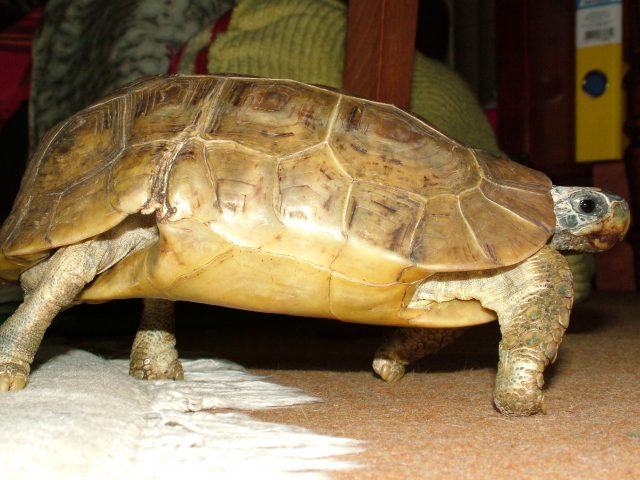Type the name of the breed you're looking for below
[wpdreams_ajaxsearchlite] Don't see the breed your're looking for? Click here and let us know!
Bell’s HingeBack Tortoise
| Place of Origin and Range | In its habitat, Bell's hinge-back tortoise favours tropical and sub-tropical savannahs of sub-Saharan Africa. |
| Description | Bell's hinge-back tortoise is a medium-sized light brown tortoise. They can grow up to 22 cm. On the back of its shell, the tortoise has a 90 degree hinge which, when closed, can protect its rear legs and tail from predators. This broad band of flexible connective tissue is located between the 4th and 5th costals and the 7th and 8th peripherals in adults. |
| Morph Patterns Available | No |
| Adult Size | Can grow up to 14in(36cm) |
| Accommodation | Arid Rocky or savannah habitat. To avoid injuries anchor any rocks in the vivarium before you add the substrate. In this case sand. You will want to include a large dish for bathing and soaking in to improve shedding. Always include a day basking spot at 80'F(27'C). Along with multiple hides. Minimum 2 x 8 feet for an adult. |
| Lifespan | Can live 10+ years |
| Feeding / Diet | Bell's hinge-back tortoise is an omnivore, with a very varied diet consisting mainly of a range of different plants, but also including insects and other meat. It feeds on vegetables, twigs, roots, leaves, fruits, earthworms, snails, tadpoles and other small invertebrates. |
| Other Considerations | Watch for theses health concerns carefully with your tortoise. Vitamin A Deficiency: Vitamin A is an important nutrient for your tortoise’s health. It is found in his diet in the form of leafy green, orange or yellow vegetables, liver, and fish. If your tortoise is not getting enough Vitamin A, he can suffer serious health problems. Always check to make sure that your tortoise does not have swollen eyelids, as this is the main sign of a Vitamin A deficiency. Also, check for weight loss, nasal discharge and infected skin. Any of these symptoms could point to a deficiency. If you think your tortoise may not be getting enough Vitamin A, you should take him to the veterinarian to get a firm diagnosis. Shell Problems: Your tortoise's shell is very important to his overall health. There are many potential problems that could occur, so you should be on the lookout at all times. Respiratory Disease: Respiratory infections have symptoms similar to vitamin A deficiency, including swollen eyelids and runny nose, so you should take your tortoise to the veterinarian to get a proper diagnosis if you suspect either. More serious infections will be characterized by breathing through the mouth, mucus in the mouth, and wheezing. Always make sure your tortoise’s environment has the proper amount of humidity, as this will help prevent respiratory problems. |



